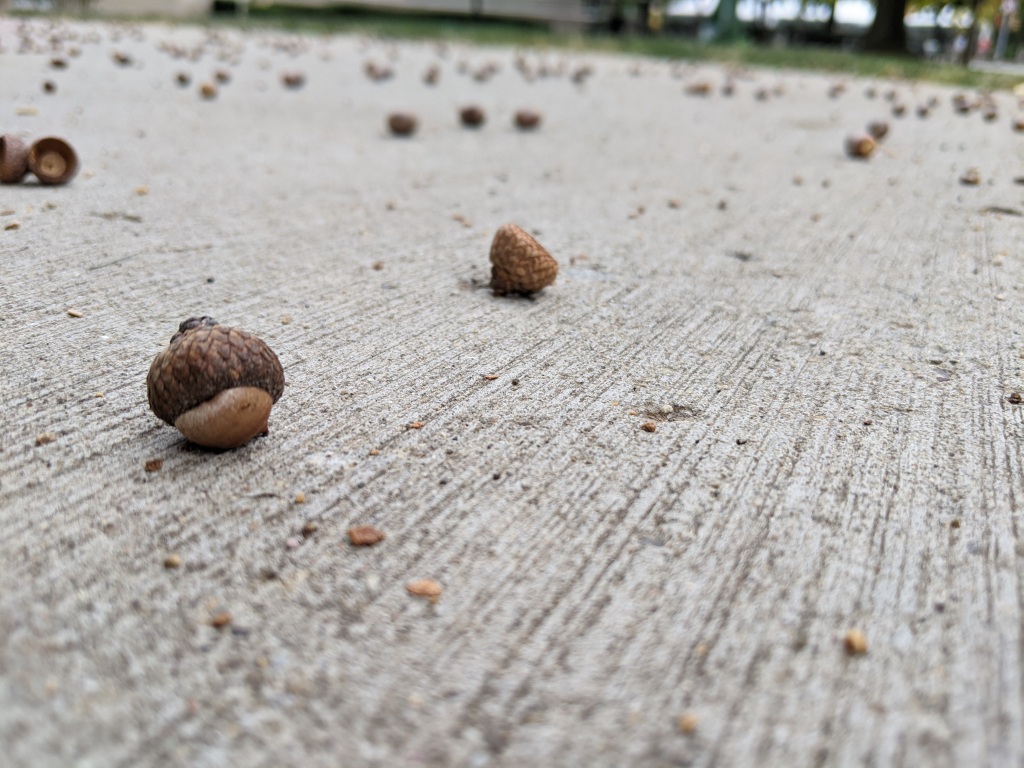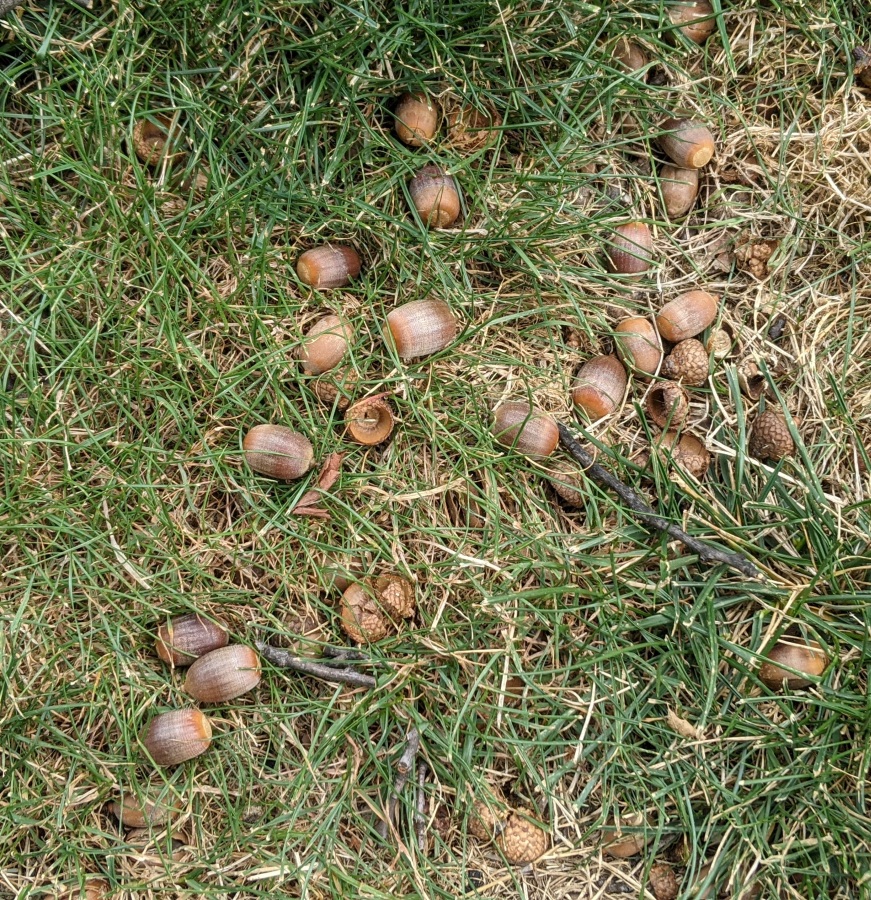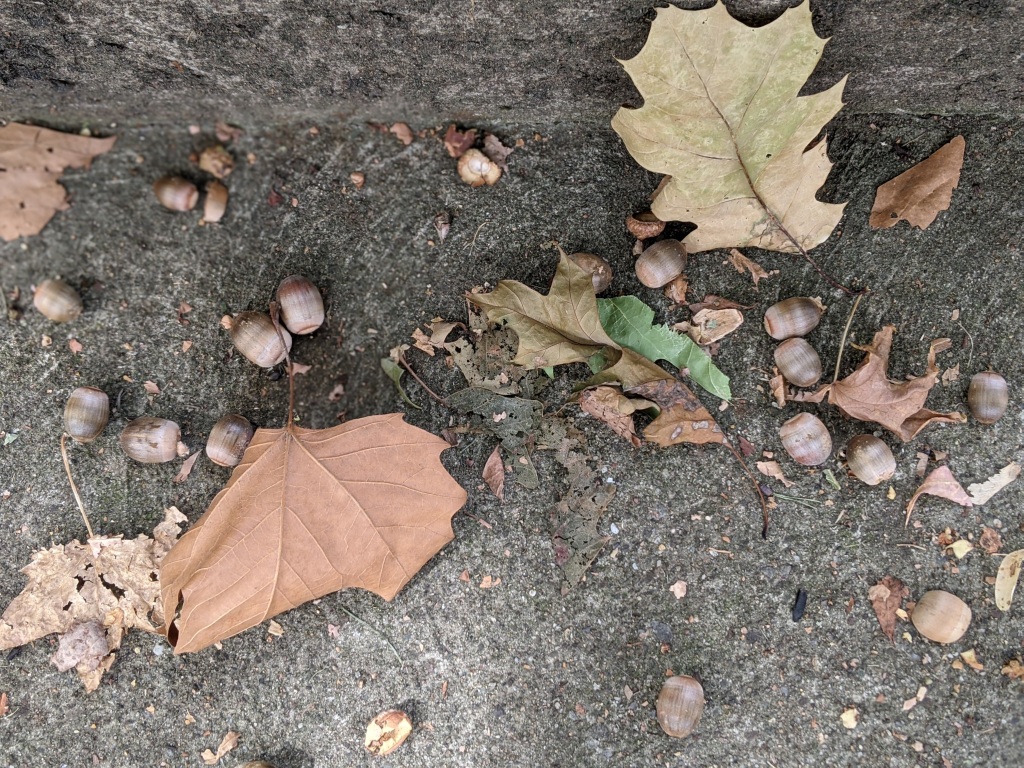
1 October 2020
When Rob Protz mentioned last week that a pin oak near his home is producing more acorns than he’d ever seen before I started paying attention in my neighborhood. Yes, there are lots of acorns in Oakland. It looks like a masting year for red oaks in southwestern Pennsylvania.

Oaks are one of many trees that irregularly cycle their fruit production to insure that predators don’t eat everything. They boom or bust by synchronizing seed production. White oaks have a bumper crop in 3 years, red oaks on a 4 year basis. The bumper crops are called masting years.
Acorns in the red oak group take two years to mature so those falling now were formed in the spring and summer of 2019, influenced by spring precipitation, summer temperatures, the last killing frost, and each other.
North Oakland has a lot of oaks (duh! it’s the neighborhood name) so of course we have acorns on the streets. They make a hollow “ponk” sound when they fall on parked cars.

Check out the acorn crop in your own neighborhood. Is it a masting year where you live?
p.s. In masting years like this you’ll see more acorn predators — squirrels, blue jays and deer — as we did in the big acorn year of 2013.
(photos by Kate St. John)
Same here in Homestead. The blue jays have even moved in. The mockingbirds and house sparrows don’t care for that. It gets rather loud at times.
In Squirrel Hill near CMU my pin oaks are producing more and bigger acorns than usual. Squirrels, chip monks, blue jays and red bellied woodpeckers are frequenting the trees.
The same in Bryn Mawr section of Forest Hills. A couple weeks of daily sweeping the steps of what the squirrels and chipmunks left behind.
In Allegheny Commons Park, Canada geese go into the streets to eat the acorns that have been broken open under the wheels of cars.